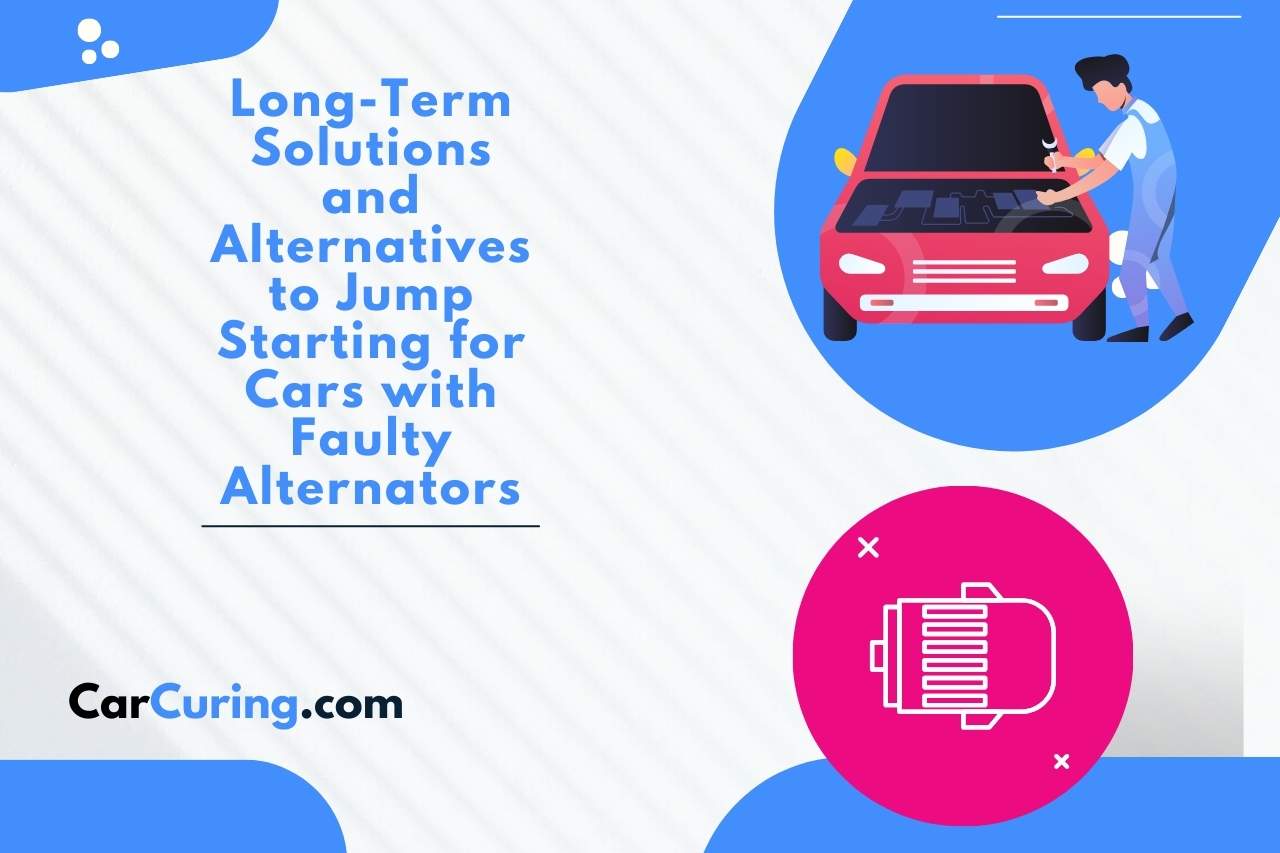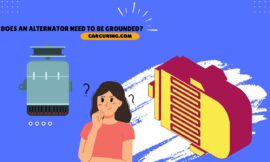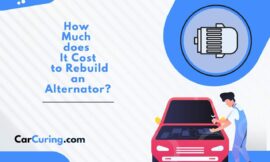When you are faced with car troubles, a common query arises: ‘Can you jump start a car with a bad alternator?’ Understanding your relationship between your alternator and your vehicle’s overall functionality is crucial in such situations. This comprehensive guide delves into your intricacies of jump-starting your car when your alternator is failing. Whether you’re an experienced driver or you are new to car maintenance, this guide offers you valuable insights and practical tips to help you navigate your common automotive challenge.
Can You Jump Start a Car with a Bad Alternator?
Yes, you can jump start your car with a bad alternator, but it’s important for you to understand your limitations and the risks involved. Here’s what you need to know:
- Temporary Solution: Jump starting your car with your bad alternator can get your engine running, but it’s a temporary fix. Since your alternator’s role is to recharge your battery while your engine is running, a malfunctioning alternator won’t effectively recharge your battery, leading you to a quick drain of any charge provided by your jump start.
- Battery Dependency: After you jump start, your car’s electrical systems will rely solely on your battery’s remaining charge. If your battery is weak or old, it may not hold enough charge to keep your engine running for an extended period.
- Risk of Stalling: There’s your high risk your car will stall once you disconnect your jumper cables if your alternator isn’t providing you adequate charge. This is especially likely if you turn on your electrical components like headlights or your radio.
- Immediate Repair Needed: If you successfully jump start your car, it should be driven directly to your repair shop to address your alternator issue. Driving with your bad alternator can lead you to other electrical problems and potential vehicle breakdowns.
Though jump-starting can work as your short-term solution, it’s not advisable to rely on it for long periods. The focus should be on getting your alternator repaired as soon as possible.
What Happens to Your Car’s Battery and Electrical System When the Alternator Is Bad?
When your alternator in your car is bad, it significantly impacts your battery and your overall electrical system. Here’s an overview of your consequences:
- Battery Drain: The alternator charges your battery while your car is running. A faulty alternator fails to charge your battery adequately, leading you to a gradual drain of its power. Eventually, your battery will deplete completely and may not have enough charge to start your car.
- Diminished Electrical Functions: The car’s electrical systems, like your headlights, dashboard lights, and infotainment system, rely on your alternator for power. A malfunctioning alternator can cause your systems to operate poorly or fail altogether, especially as your battery’s charge diminishes.
- Engine Performance Issues: Since your alternator also powers essential components like your ignition system and fuel injectors, a bad alternator can lead your to engine performance issues, such as your misfires, rough idling, or stalling.
- Total System Failure: In severe cases, your completely failed alternator can lead you to a total electrical system shutdown while driving, which can be dangerous and lead you to a vehicle breakdown.
Understanding the critical role of your alternator in maintaining your battery and electrical systems highlights the importance of keeping it in good working condition. Ignoring alternator issues can lead you to more severe problems, including your complete vehicle immobilization.
Step-by-Step Guide to Jump Starting a Car with a Failing Alternator
Jump starting your car with a failing alternator requires careful steps to minimize your risks and ensure safety. Here’s your step-by-step guide:
- Prepare Both Cars: Position your working car close to your one with your failing alternator, ensuring they do not touch. Turn off all electrical components in both of your cars.
- Connect Jumper Cables: Attach one red clamp to your positive terminal of your dead battery. Connect your other red clamp to your positive terminal of your good battery. Then, attach one black clamp to your negative terminal of your good battery. Connect your other black clamp to an unpainted metal surface on your car with your bad alternator, away from your battery.
- Start Your Working Car: Turn on your engine of your working car and let it run for a few minutes to charge your dead battery.
- Attempt to Start Your Car: Try starting your car with your bad alternator. If it doesn’t start, let your good car charge your battery for a few more minutes and try again.
- Remove Cables After Starting: Once started, remove your jumper cables in reverse order of how you attached them. Avoid letting your clamps touch each other or either car while any part of your cables is still connected.
- Drive to a Service Location: If your car starts, drive it immediately to your service station for alternator repair. Remember, your car is relying solely on your battery, which may not last long.
Always follow your safety precautions when jump starting, and consider seeking your professional assistance if you’re unsure about your process.
What to Do After Jump Starting a Car with a Bad Alternator?
After successfully jump-starting your car with your bad alternator, immediate and appropriate actions are crucial to ensure your safety and minimize further damage. Here’s what you should do:
- Keep Your Engine Running: Once your car starts, keep your engine running. Turning it off could mean your battery won’t have enough power to start again due to your faulty alternator.
- Minimize Electrical Usage: Reduce your load on your battery by turning off non-essential electrical components like your radio, air conditioner, and interior lights.
- Drive Carefully to a Service Location: Without stopping, drive your vehicle directly to your repair shop or service station. The battery has limited charge and may not last long, especially if your alternator isn’t charging it at all.
- Avoid Stalling: Be cautious to avoid situations where your car might stall, as restarting it could be difficult. This includes avoiding your heavy traffic conditions and stopping unnecessarily.
- Prepare for Possible Breakdown: Be aware that your car might still break down if your battery drains completely. Keep your cell phone handy for emergencies and stay on routes with your service stations or garages nearby.
- Seek Immediate Repair: Prioritize getting your alternator inspected and repaired as soon as possible. Continuing to drive with your bad alternator risks stranding you and can lead you to further damage to your electrical system.
Taking these steps after jump-starting a car with your bad alternator is crucial for reaching your safe location and getting your necessary repairs.

Long-Term Solutions and Alternatives to Jump Starting for Cars with Faulty Alternators
For your vehicles with faulty alternators, relying solely on jump-starting is not your sustainable solution. Long-term solutions and alternatives are essential for maintaining your vehicle’s reliability. Here’s a look at some of your effective strategies:
- Alternator Repair or Replacement: The most definitive long-term solution is to have your alternator repaired or replaced. A functioning alternator is crucial for your vehicle’s electrical system and overall health.
- Regular Battery Maintenance: Regularly check and maintain your battery. A healthy battery can help mitigate your impact of a failing alternator temporarily, but it’s not your long-term fix.
- Use a Battery Charger: If your alternator is weak but not completely failed, using your battery charger to maintain your battery’s charge can be your temporary solution. This is particularly useful if your car is used infrequently.
- Inspect and Tighten Connections: Loose connections can mimic your alternator problems. Regularly inspect and tighten your battery and alternator connections to ensure your efficient operation.
- Upgrade Electrical Components: In some cases, upgrading your other electrical components, like your belts and pulleys associated with your alternator, can improve its efficiency and your lifespan.
- Regular Vehicle Check-Ups: Regular check-ups by your professional can identify your alternator issues early, preventing your situation from worsening.
Implementing these long-term solutions can ensure your vehicle remains reliable and reduces your likelihood of being stranded due to your bad alternator. Remember, while jump-starting can help you in emergencies, it does not address your underlying issue with your alternator.
Watch this one,
Video Credits – LONESTAR HAWAIIAN
You May Also Like
- Can a Bad Alternator Cause a Misfire? Unraveling the Mystery!
- Can Water Damage the Alternator? (Essential Tips and Advice)
- Why is My Alternator Smoking? Unveiling the Mystery!
- How Much does It Cost to Rebuild an Alternator? (Detailed Guide)
- Does a Bad Alternator Drain your Battery? Drain Issues!
- How to Lubricate an Alternator? Maintaining Your Alternator!
- Does a Bad Alternator Make a Clicking Noise? Solving the Mystery!


